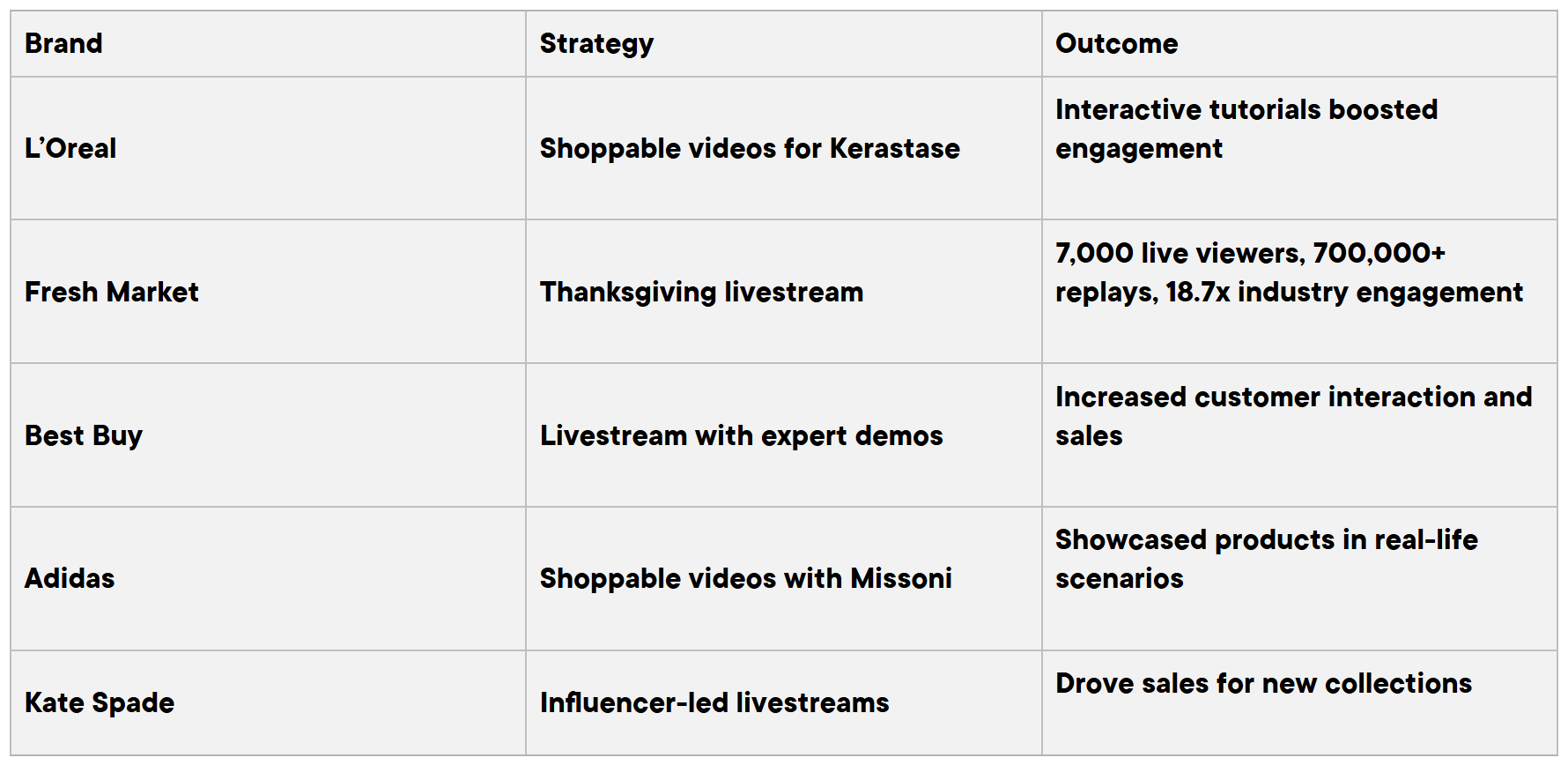.webp?2025-12-17T15:00:29.367Z)
Spotify Wrapped ideas make stats lovable

Shoppertainment: Blending Commerce with Entertainment
Picture yourself scrolling through Instagram on a quiet evening. A live video pops up. An influencer is styling outfits, sharing tips, and answering viewer questions. With one tap, you can buy the clothes she’s wearing. It’s fun, easy, and feels more like a show than a sales pitch. This is shoppertainment, and it’s changing how brands connect with customers.
Shoppertainment combines shopping and entertainment to create engaging experiences. It’s about making the act of buying feel exciting, not routine. For marketers and product managers, it’s a powerful tool to cut through the noise of a crowded digital market. Let’s explore its history, trends, examples, benefits, challenges, and practical tips for getting started.
The Roots of Shoppertainment
Shoppertainment isn’t brand new. In the 1980s, TV shopping channels like QVC entertained viewers while selling products. Hosts charmed audiences, making purchases feel personal. By the 1990s, some sources suggest the term “shoppertainment” emerged, tied to in-store events like performances or interactive displays.
The modern version took off in 2016. Southeast Asian retailer Lazada pioneered live streaming to engage online shoppers. China’s Taobao Live platform also surged, with sales growing 150% during the COVID-19 pandemic. The pandemic pushed brands worldwide to rethink online shopping, accelerating shoppertainment’s rise.
Today, it includes digital tools like shoppable videos, augmented reality (AR), and gamification. Technology has made these experiences more accessible, especially on social media platforms like TikTok and Instagram.
What’s Driving the Trend
Shoppertainment is booming, especially in Asia. A 2023 study by TikTok and Boston Consulting Group predicts the Asia-Pacific shoppertainment market will hit $1 trillion by 2025, up from $500 billion in 2021. Globally, brands are catching on as consumers demand more than just products — they want fun.
Here are key trends shaping shoppertainment:
- Live Streaming: Influencers or brand reps showcase products in real-time, letting viewers buy instantly.
- Shoppable Videos: Pre-recorded clips where customers click items to purchase.
- Augmented Reality: Tools like virtual try-ons for makeup or furniture visualization in homes.
- Gamification: Quizzes, spin-the-wheel games, or challenges that make shopping playful.
A TikTok survey found 89% of users made unplanned purchases after watching entertaining videos. One in three customers wants shopping to feel more enjoyable. These stats show why brands are investing in shoppertainment.
Brands Doing It Right
Let’s look at how some companies are nailing shoppertainment. These examples show its versatility across industries.

Why It Works
Shoppertainment solves a big problem for marketers: getting noticed. With consumers seeing up to 10,000 ads daily, standing out is tough. Here’s why it’s effective:
- Engagement: Interactive videos keep viewers hooked 47% longer than standard ones.
- Sales: TikTok’s study showed 89% of users bought impulsively after fun content.
- Loyalty: Memorable experiences build emotional connections, encouraging repeat purchases.
- Uniqueness: Brands offering novel experiences differentiate themselves.
Tips to Get Started
You don’t need a massive budget to try shoppertainment. Here are practical tips, inspired by industry insights:
- Target the Right Audience: Focus on Gen Z and millennials, who love interactive content.
- Pick Smart Platforms: Use TikTok or Instagram, where 81% of users research products.
- Work with Influencers: Partner with micro-influencers for authentic promotion.
- Keep It Interactive: Add polls, Q&As, or AR try-ons to engage viewers.
- Offer Deals: Limited-time discounts drive quick purchases.
- Encourage Reviews: 36% of shoppers trust user reviews, so ask for feedback.
- Start Simple: Try shoppable videos or a spin-the-wheel game before scaling up.
Where It’s Headed
Shoppertainment is set to grow. Emerging technologies will shape its future:
- Virtual Reality (VR): Imagine exploring a virtual store where you can try products.
- Artificial Intelligence (AI): AI can personalize experiences, suggesting items you’ll love.
- Social Media Integration: Platforms like TikTok Shop will expand shoppable features.
- Global Reach: While Asia leads, Western markets are adopting it fast.
The $1 trillion projection for 2025 shows its potential. In Indonesia, shoppertainment already accounts for 26% of the region’s market. The future is bright, but brands must innovate to stay ahead.
Conclusion
Shoppertainment is a shift in how we shop, blending fun with function. For marketers and product managers, it’s a chance to engage customers in ways traditional ads can’t. Yes, it has challenges, but the rewards like higher sales, loyal customers, and a standout brand are worth it.
Ready to give it a try? Start small with a shoppable video or a live Q&A. Your customers might just love the experience as much as you love the results.

